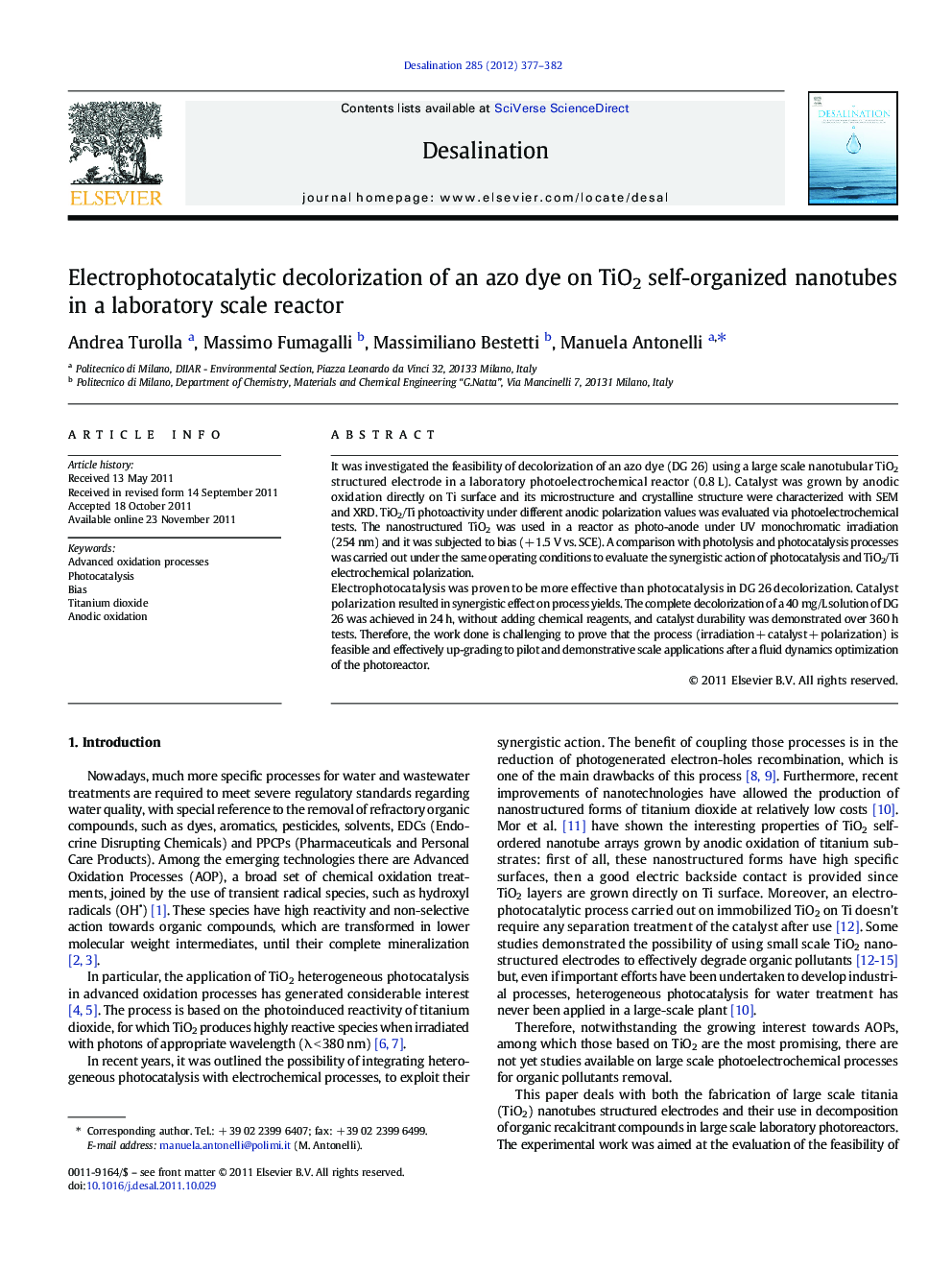| کد مقاله | کد نشریه | سال انتشار | مقاله انگلیسی | نسخه تمام متن |
|---|---|---|---|---|
| 624749 | 1455406 | 2012 | 6 صفحه PDF | دانلود رایگان |

It was investigated the feasibility of decolorization of an azo dye (DG 26) using a large scale nanotubular TiO2 structured electrode in a laboratory photoelectrochemical reactor (0.8 L). Catalyst was grown by anodic oxidation directly on Ti surface and its microstructure and crystalline structure were characterized with SEM and XRD. TiO2/Ti photoactivity under different anodic polarization values was evaluated via photoelectrochemical tests. The nanostructured TiO2 was used in a reactor as photo-anode under UV monochromatic irradiation (254 nm) and it was subjected to bias (+ 1.5 V vs. SCE). A comparison with photolysis and photocatalysis processes was carried out under the same operating conditions to evaluate the synergistic action of photocatalysis and TiO2/Ti electrochemical polarization.Electrophotocatalysis was proven to be more effective than photocatalysis in DG 26 decolorization. Catalyst polarization resulted in synergistic effect on process yields. The complete decolorization of a 40 mg/L solution of DG 26 was achieved in 24 h, without adding chemical reagents, and catalyst durability was demonstrated over 360 h tests. Therefore, the work done is challenging to prove that the process (irradiation + catalyst + polarization) is feasible and effectively up-grading to pilot and demonstrative scale applications after a fluid dynamics optimization of the photoreactor.
Figure optionsDownload as PowerPoint slideHighlights
► Nanotubular TiO2 grown by anodic oxidation directly on Ti conductive support.
► TiO2 used in a reactor as photo-anode under UV monochromatic irradiation (254 nm).
► TiO2 biased to reduce electron-hole recombination, main drawback of photocatalysis.
► Relevant synergistic enhancement of photocatalysis yields in decolorization tests.
► Good TiO2 durability over usage time: constant performances and no surface damages.
Journal: Desalination - Volume 285, 31 January 2012, Pages 377–382